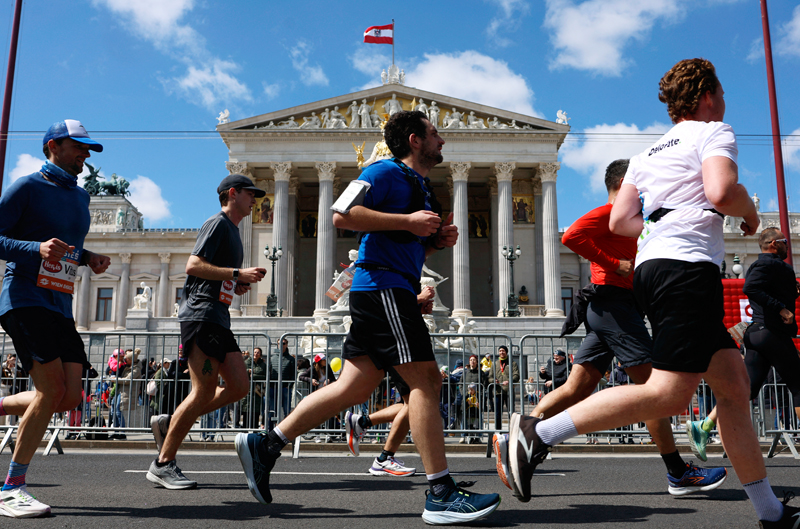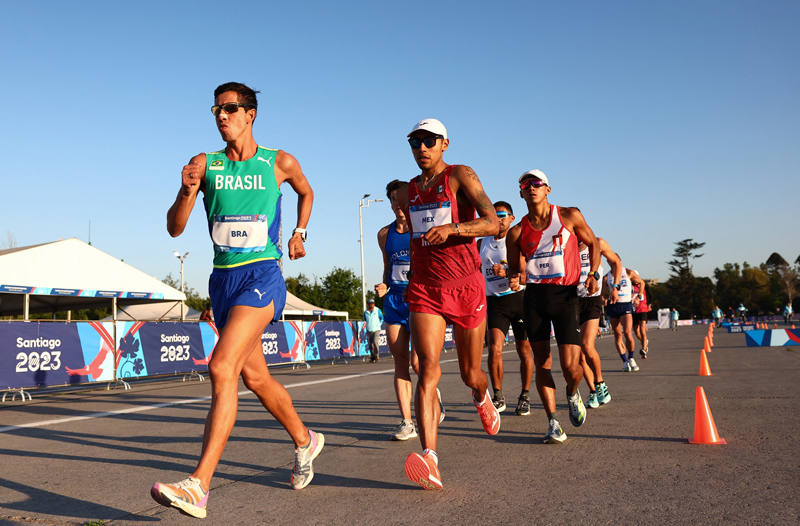You are viewing 1 of your 1 free articles. For unlimited access take a risk-free trial
Fat loss and weight management: spot the difference
It’s a well-known fact that you can’t produce spot reduction of fat in a certain area of the body by performing exercises for that area. Or is it? Andrew Hamilton explores some fascinating new research…
Without sounding like a conspiracy theorist, one thing that that last four years has taught me is that not everything you once believed is necessarily true. In short, even well accepted theories and practices need to be continually questioned and tested. Contrary to the mainstream media narrative of recent years, retaining some scepticism about widely held notions and testing them against different scientific hypotheses is what constitutes real science, and a process that lies at the heart scientific methodology. In short, there is no such thing as ‘The Science’ because any current scientific hypothesis becomes null and void once evidence emerges that contradicts it. In other words, scientific progress occurs when science continually evolves.
Upending conventional wisdom
Why this ‘philosophy of science’ type introduction? Because sometimes, new evidence can upend such well-established ‘science’ that it seems hard to believe. But actually, occasional upending of previous science is exactly how real science progresses! Take one of the most widely accepted tenets of exercise and weight management, namely that there’s no such thing as spot reduction when trying to lose body fat. Although the existence of spot reduction of body fat has been a source of debate for over half a century, it has been widely accepted by exercise physiologists that physical exercise, either involving specific body parts or larger muscle groups, leads to whole-body adipose tissue utilization rather than subcutaneous fat release stored adjacent to the working muscles(1,2).
In plain English, this core tenet of exercise physiology says that you cannot lose body fat from a particular area of the body (for example the tummy) by doing lots of exercise for that body part (ie the tummy). That’s because fat burned during exercise is released from stores all over the body, regardless of which muscles are being worked – ie released globally, not locally. This in turn means that the best way to lose body fat from the tummy is to do aerobic type exercise (eg running, cycling, swimming, rowing etc) and rest assured that some of the fat being burned for energy will be released from fat stores around the tummy, thereby reducing the waistline.
Flaws in research
While previous research (cited above) supports the ‘non’ spot-reduction of body fat theory – a theory that became regarded as ‘the science’ - it turns out on closer analysis that there were a few flaws in these studies. Most notably, these previous studies predominantly used strength training, not aerobic endurance training to test the theory(3-5). This is rather surprising since strength training is typically applied using less than 15 few repetitions at relatively high intensity in order to increase muscle strength and recruitment. This type of exercise therefore relies almost exclusively on anaerobic energy pathways fuelled by carbohydrate, not fat(6).
Another flaw was that in these studies comparing aerobic training vs. strength training for spot reduction, total energy expenditure during training was not matched. Typically, far less energy was expended in the strength exercises trials, which would have made it very difficult to detect meaningful changes in body fat in a local area. This was also complicated by the fact that some studies looked at exercising very small muscles, with minimal energy burn and also measuring any changes with skinfold calipers only, rather than a much more accurate measurement tool such as dual-X-ray absorptiometry analysis (DXA – see forthcoming article next month).
Testing ‘The Science’
While the ‘no spot reduction’ theory is generally accepted as being true, when you look at the evidence supporting it, you realize that it’s actually not that robust. A study designed to produce really robust evidence for or against the theory of spot reduction needs to examine the distribution of adipose tissue (fat stores) utilization following training not by comparing strength exercise vs. aerobic exercise – but instead by closely matching aerobic endurance exercise interventions for total energy expenditure in a randomized controlled trial. To test this for example in the tummy region, this intervention should compare aerobic endurance training for the abdominal muscles vs. generalized aerobic training, so see whether the former results in more fat loss compared to the latter!
New research
The good news is that an intrepid team of researchers from the Norwegian University of Science and Technology in Trondheim, Norway decided to question the accepted wisdom on spot reduction of body by testing it with a much more rigorously designed scientific study(7). Published last month in the journal ‘Physiological Reports, this study assessed whether a combination of treadmill and abdominal endurance exercises would lead to increased trunk adipose tissue (fat stores) utilization beyond what would be expected solely with treadmill exercise – ie what is typically recommended for fat reduction.
What they did
The scientists measured the effects of treadmill and abdominal endurance exercises (torso rotation and abdominal crunches) performed four days per week for ten weeks on fat mass distribution, measured using highly accurate DXA technology. The results were compared to those of a control group that only performed energy-matched treadmill aerobic endurance training during the study period. Given the general acceptance that spot reduction does not occur, these scientists were testing the hypotheses that reductions in fat mass located in the trunk, total fat mass, and body weight would not be different between the two groups following the training period.
To do this, 16 overweight males (average age 43 years with average body mass index of 29.5) were randomized to one of two groups:
· Abdominal endurance exercise - combining treadmill running at 70% max heart rate for 27 minutes with four sets of 4-minute bursts of torso rotation and abdominal crunches. These ab exercises were performed at 30%-40% of 1RM (ie low intensity) to enable the sets to be completed, thus making the abdominal exercises endurance-like in nature.
· A control group - performing only treadmill running for 45 minutes at 70% max heart rate.
In both groups, training sessions were performed four times per week for 10 weeks with an exercise physiologist who supervised all sessions. All subjects were instructed to abstain from additional exercise training or dietary changes throughout the duration of the study. Importantly, the two training interventions utilized were carefully matched for total energy expenditure; because the abdominal endurance exercises only yielded 40.4% of the energy expended during one 45-min treadmill training session. Therefore, additional treadmill running (providing the remaining 59.6% of the energy expenditure) was added to the abdominal training group exercise program to ensure calorie burn rates were equal across the two groups.
What they found
Here is what they found:
· The first finding came as no surprise to the researchers because both groups lost weight, reduced their BMI levels and reduced their waist circumference after the 10-week intervention. For the abdominal training group, the average losses were 1.8kg, 0.5BMI and 6cms respectively. For the treadmill-only group, the figures were 2.7kgs, 0.9BMI and 4cms respectively. And while there were slight differences in these losses between groups, these were not significant.
· In contrast to the first finding, an analysis of abdominal fat levels in the two groups shocked the researchers. Fat mass stored in the trunk decreased more in the abdominal training group than in the control group (from 30.8 % to 28.9% in the ab group vs. 25.9% to 25.2% in the control group). In fact, a statistical analysis showed that while trunk fat mass decreased by 1170 g (7%) in the abdominal training group, there was no significant change in trunk fat mass in the control group (see figure 1).
Figure 1: Trunk fat mass changes

Practical implications for athletes
The researchers summed up their findings very eloquently: “To the best of our knowledge, our study is the first to document that aerobic endurance exercise of the abdominal body segment leads to increased release and utilization of adipose tissue stored adjacent to the working muscles, rather than generalized whole-body utilization.” In short, the received wisdom of the past half century is wrong – spot reduction by targeted exercises IS possible!
What does this mean for those trying to lose weight, particularly those looking for a more targeted weight loss or even just for aesthetics? Well, the first thing to say is that forget the conventional wisdom, because this research shows that it really is possible to spot reduce. So if you feel that reducing body fat in a certain area of the body could be advantageous performance wise – for example, swimmers who wish to reduce abdominal fat there reducing frontal profile area for better streamlining (see this article) then it’s worth considering adding some targeted exercise to that area.
As to how that targeted exercise should be structured, the key is to choose a low-loading so that these exercises can be sustained – which ensures the session becomes muscular endurance training rather than strength training. In the study above, the load was adjusted so that between 20 and 40 reps per minute were completed in the torso rotation and abdominal crunch exercises respectively. In total, the two exercises delivered just over 30 minutes of repetitive muscular endurance training for the target area, and that is what you should aim for.
It’s also worth pointing out that runners and cyclists are essentially performing muscular endurance exercise when they train anyway; therefore it is not worth adding in extra targeted endurance exercises in the quest for lower body fat in the legs. That will be achieved by higher total training volumes combined with good dietary habits. The same is true for arm and back muscles in rowers, shoulder and latissimus muscles in swimmers etc. In other words, this spot-reduction strategy is best reserved for muscle groups that are not routinely worked in your sport.
Finally, while targeting particular areas of the body to spot reduce body fat seems to have real merit, don’t forget that a good base of aerobic training/fitness and excellent nutrition should always be at the core of any overall weight management plan. If your overall fat burning capacity is high, your body composition will be likely be excellent, with no areas of the body carrying significant amounts of excess fat. If you want proof of this, just watch elite marathoners racing and note how none of them will be sporting a podgy tummy!
References
1. European Journal of Applied Physiology and Occupational Physiology 1979; 42(4), 271–281
2. McArdle, W. D., Katch, F. I., & Katch, V. L. 2008. Overweight, obesity, and weight control. In Exercise physiology: Nutrition, energy, and human performance (7th ed., pp. 780–825). Lippincott Williams & Wilkins
3. Medicine and Science in Sports and Exercise 2007; 39(7), 1177–1185
4. Research Quarterly 1965; 36, 168–173
5. Research Quarterly 1968; 39(3), 647–652
6. McArdle, W. D., Katch, F. I., & Katch, V. L. (2008b). Energy transfer during exercise. Exercise physiology: Nutrition, energy, and human performance (7th ed., pp. 162–177). Lippincott Williams & Wilkins.
7. Physiol Rep. 2023 Nov;11(22):e15853. doi: 10.14814/phy2.15853
Newsletter Sign Up
Testimonials
Dr. Alexandra Fandetti-Robin, Back & Body Chiropractic
Elspeth Cowell MSCh DpodM SRCh HCPC reg
William Hunter, Nuffield Health
Newsletter Sign Up
Coaches Testimonials
Dr. Alexandra Fandetti-Robin, Back & Body Chiropractic
Elspeth Cowell MSCh DpodM SRCh HCPC reg
William Hunter, Nuffield Health
Keep up with latest sports science research and apply it to maximize performance
Today you have the chance to join a group of athletes, and sports coaches/trainers who all have something special in common...
They use the latest research to improve performance for themselves and their clients - both athletes and sports teams - with help from global specialists in the fields of sports science, sports medicine and sports psychology.
They do this by reading Sports Performance Bulletin, an easy-to-digest but serious-minded journal dedicated to high performance sports. SPB offers a wealth of information and insight into the latest research, in an easily-accessible and understood format, along with a wealth of practical recommendations.
*includes 3 coaching manuals
Get Inspired
All the latest techniques and approaches
Sports Performance Bulletin helps dedicated endurance athletes improve their performance. Sense-checking the latest sports science research, and sourcing evidence and case studies to support findings, Sports Performance Bulletin turns proven insights into easily digestible practical advice. Supporting athletes, coaches and professionals who wish to ensure their guidance and programmes are kept right up to date and based on credible science.










